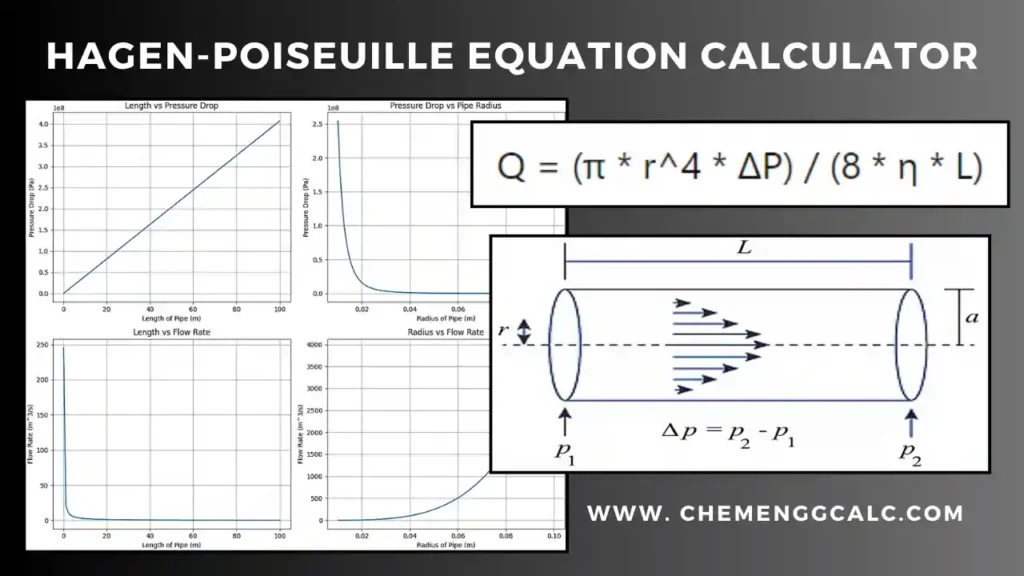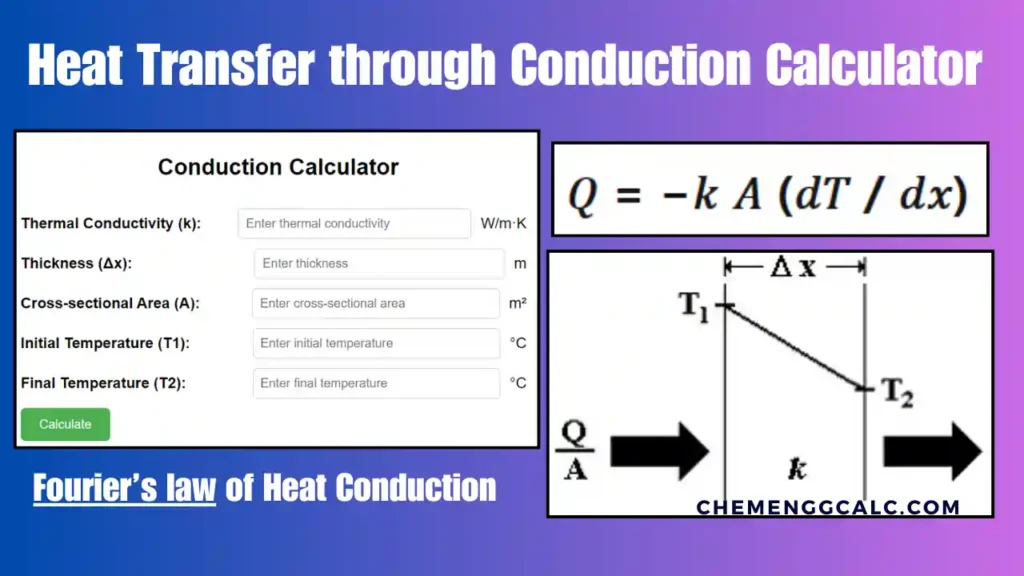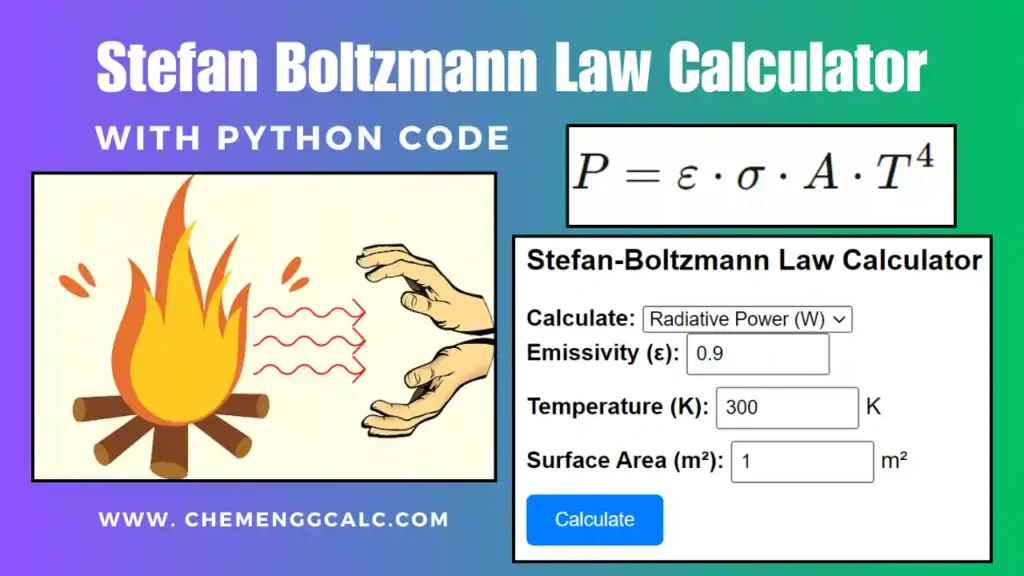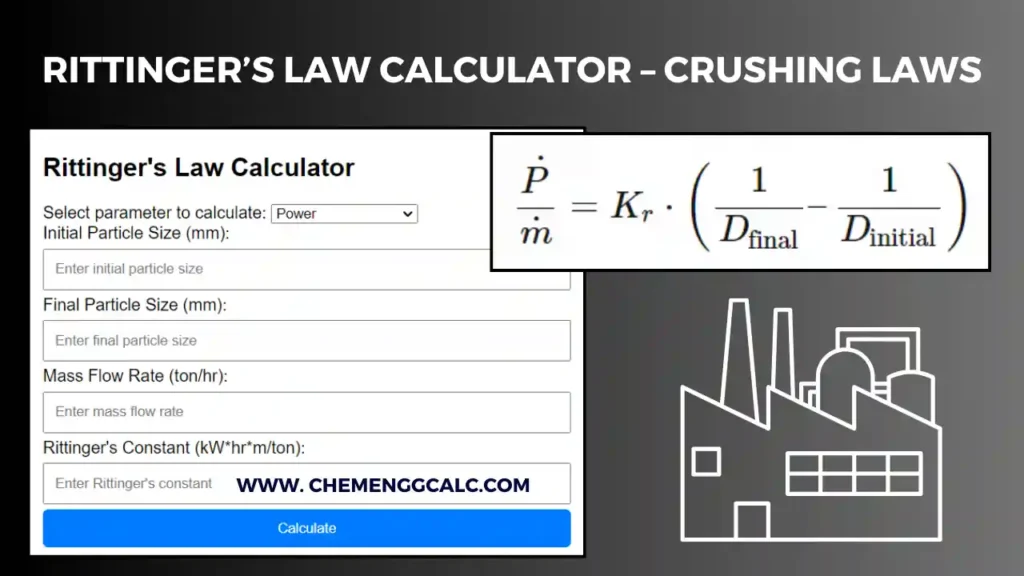Table of Contents
Heat conduction in spherical shells / walls having applications like thermal insulation layers in storage tanks and cryogenic systems which involves the heat conduction from a higher temperature at the inner radius to a lower temperature at the outer radius.
In spherical structures heat transfer profile follows a non linear radial gradient, with the temperature gradually decreasing from the inner to the outer surface.
Related: Heat Transfer through Convection Calculator – Newton’s Law of Cooling
Related: Heat Transfer through Conduction Calculator – Fourier’s law
Heat Conduction Equation for Sphere
For steady-state heat conduction in a spherical wall without internal heat generation, Fourier’s law of heat conduction in spherical coordinates is given by:
\[q = -k A \frac{dT}{dr}\]
where:
- \( q \) is the heat transfer rate,
- \( k \) is the thermal conductivity of the material,
- \( A \) is the area through which heat is transferred (for a spherical shell, \( A = 4\pi r^2 \ \) ),
- \( \frac{dT}{dr} \) is the temperature gradient in the radial direction.
Related: Overall Heat Transfer Coefficient Calculator for Composite Walls
In spherical coordinates, heat flows through an area that changes with radius r. This changing area impacts how heat is distributed, leading to a temperature gradient which makes it non-linear and follows a inverse relationship with radius.

For a spherical shell with inner surface at r=R1 at temperature T1, and outer surface at r=R2 with temperature T2, the heat transfer rate, Q across a spherical wall, based on the temperature difference and material properties, is:
\[Q = \frac{4 \pi k (T_1 – T_2)}{\frac{1}{R_1} – \frac{1}{R_2}}\]
where, k is the Thermal conductivity of the material (W/m·K)
The temperature gradient is steeper near the inner radius and shallower toward the outer radius, which gives curved temperature distribution through the shell.
Note: This equation is applied in calculating heat transfer for spherical insulation for example, tanks for liquefied gases, designing spherical heat exchangers, etc.
Related: Critical Thickness of Insulation Calculator for Cylinder and Sphere
Heat Conduction in Sphere Calculator
This Heat Conduction in Spherical Shell Calculator helps users to calculate all the parameters involved in the heat conduction process through a spherical shell, such as the heat transfer rate, thermal conductivity, inner and outer radius, and inner and outer surface temperatures. Based on user selection from the drop down menu and then get the desired results.
Related: Heat Transfer through Convection Calculator – Newton’s Law of Cooling
Related: Heat Conduction in Cylindrical Systems – Online Calculator & Python Code
Derivation for Heat Conduction in Sphere
To derive the heat transfer through conduction in a spherical shell, consider a hollow sphere with an inner radius r1 and outer radius r2 inner surface temperature T1 and outer surface temperature T2 Assuming steady-state conduction with no internal heat generation, and heat flows radially outward.
Edition: Hardcover – January 1, 2001, By: Y.V.C. Rao
An essential guide to heat transfer concepts, covering fundamental principles and practical applications for students and professionals in engineering.
Buy on AmazonAccording to Fourier’s law of heat conduction:
\[q = -k A \frac{dT}{dr}\]
In spherical coordinates, the surface area ( A ) through which heat flows at a radius ( r ) is the surface area of a sphere, given by:
\[A= 4 \pi r^2\]
Substituting this into Fourier’s law, we get:
\[q = -k (4 \pi r^2) \frac{dT}{dr}\]
or,
\[\frac{dT}{dr} = -\frac{q}{4 \pi k r^2}\]
Now, seprating variables and rearrange the equation:
\[\int_{T_1}^{T_2} dT = -\int_{r_1}^{r_2} \frac{q}{4 \pi k r^2} \, dr\]
Integrating the left side with respect to T from T1 to T2 and the right side with respect to r from r1 to r2 :
\[T_2 – T_1 = -\frac{q}{4 \pi k} \int_{r_1}^{r_2} \frac{1}{r^2} \, dr\]
On simplifying, we get:
\[T_2 – T_1 = \frac{q}{4 \pi k} \left(\frac{1}{r_1} – \frac{1}{r_2}\right)\]
Further rearranging, the heat transfer rate ( q ) can be expressed as:
\[q = \frac{4 \pi k (T_1 – T_2)}{\left(\frac{1}{r_1} – \frac{1}{r_2}\right)}\]
This equation represents the temperature profile at any radial position r within the spherical shell and indicates that the temperature varies as a function of \( \frac{1}{r} \) across the shell’s thickness.

In terms of thermal resistance R for radial conduction in a spherical shell is defined as :
\[R = \frac{\frac{1}{r_1} – \frac{1}{r_2}}{4 \pi k}\]
the heat transfer rate can be rewritten as:
\[q = \frac{T_1 – T_2}{R}\]
This is the expression for analyzing radial heat conduction in spherical systems, such as insulated spheres, thermal barriers, and other spherical thermal devices.
Related: Joule-Thomson Effect – Coefficient Calculation for CO2 and N2
Related: Nusselt Number Calculator – Significance and Calculation
Example Problem on Heat Conduction in Sphere
A spherical shaped vessel of 1.2 m diameter is 100 mm thick. Find the rate of heat leakage, if the temperature difference between the inner and outer surface is 200oC. Thermal conductivity of the material of sphere is 0.3 kJ/m-hoC.
Solution:
Given data:
- Outer diameter of the sphere, ( D = 1.2 m )
- Thickness of the shell = 100 mm – 0.1 m
- Outer radius, ( r2 = 1.2/2= 0.6 m )
- Inner radius, ( r1 = r2 – 0.1 = 0.5 m )
- Temperature difference, ( T_1 – T_2 = 200 oC )
- Thermal conductivity, k = 0.3 kJ/mhoC = 300 W/(m·K)
The heat leakage rate ( q ) is calculated using equation for spherical shell as:
\[q = \frac{4 \pi k (T_1 – T_2)}{\left(\frac{1}{r_1} – \frac{1}{r_2}\right)}\]
Substituting the values:
\[q = \frac{4 \pi \times 300 \times 200}{\left(\frac{1}{0.5} – \frac{1}{0.6}\right)}\]
on solving, we get:
q = 2262 KJ/ hr
Thus, the rate of heat leakage through the spherical vessel is approximately 2.26 MW.
Related: Heat Transfer Calculators for Chemical Engineering
Related: Fluid Mechanics Calculators for Chemical Engineering
Edition: 9th Edition, By: Don W. Green, Marylee Z. Southard
The ultimate resource for chemical engineering, covering core concepts, data, and insights. An invaluable reference for students, engineers, and industry professionals.
Buy on AmazonPython Code for Heat Conduction in Sphere
This python code helps user to compute the temperature distribution in a spherical object under steady-state heat conduction with no heat generation. it then calculates the temperature at different radial positions across spherical walls which is shown in the plot.
Note: This Python code solves the specified problem. Users can copy the code and run it in a suitable Python environment. By adjusting the input parameters, users can observe how the output changes accordingly.
import numpy as np
import matplotlib.pyplot as plt
def temperature_distribution_spherical(r1, r2, q, thermal_conductivity):
"""
Calculate the temperature at radius r2 given the heat flux q in a spherical shell.
Parameters:
- r1 (float): Inner radius of the sphere (m)
- r2 (float): Radius at which temperature is calculated (m)
- q (float): Heat flux (W)
- thermal_conductivity (float): Thermal conductivity (W/(m·K))
Returns:
- T2 (float): Temperature at radius r2 (°C)
"""
T1 = 100 # Inner temperature (°C)
T2 = T1 - (q / (4 * np.pi * thermal_conductivity)) * (1/r1 - 1/r2)
return T2
# Parameters
inner_radius = 1.0 # Inner radius of the sphere (m)
outer_radius = 2.0 # Outer radius of the sphere (m)
heat_flux = 5000 # Heat flux (W)
# Different thermal conductivities
thermal_conductivities = [2.0, 2.5, 4.0, 5.0, 10.0] # W/(m·K)
# Radial positions
radii = np.linspace(inner_radius, outer_radius, 100)
# Plotting
plt.figure(figsize=(10, 6))
for k in thermal_conductivities:
T2 = [temperature_distribution_spherical(inner_radius, r, heat_flux, k) for r in radii]
plt.plot(radii, T2, label=f'Thermal Conductivity = {k} W/(m·K)')
plt.title('Temperature Distribution in a Sphere')
plt.xlabel('Radius (m)')
plt.ylabel('Temperature (°C)')
plt.axhline(y=25, color='r', linestyle='--', label='Ambient Temperature (25 °C)') # Outer temperature
plt.legend()
plt.grid()
plt.show()Output:

Resources
- Heat Transfer a Practical Approach – Book by Yunus A Çengel
- “Fundamentals of Heat and Mass Transfer” by Theodore L. Bergman, Adrienne S. Lavine, Frank P. Incropera, and David P. DeWitt.
- “Heat Transfer Book” by David W. Hahn.
- “Conduction of Heat in Solids” by H.S. Carslaw and J.C. Jaeger.
- “Introduction to Heat Transfer” by Frank P. Incropera, David P. DeWitt, Theodore L. Bergman, and Adrienne S. Lavine.
Disclaimer: The Solver provided here is for educational purposes. While efforts ensure accuracy, results may not always reflect real-world scenarios. Verify results with other sources and consult professionals for critical applications. Contact us for any suggestions or corrections.








